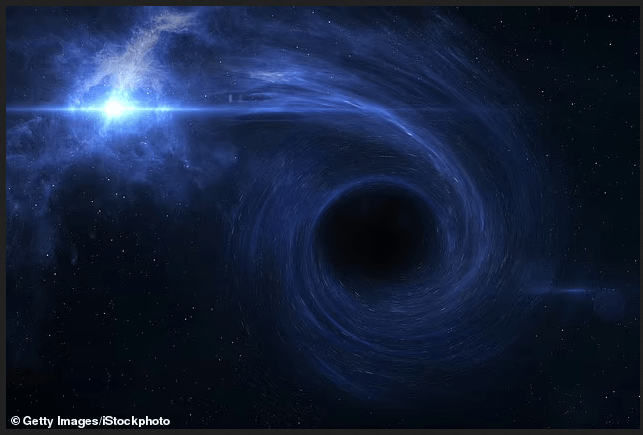An unusually bright, suspended black hole has been discovered in a nearby new universe, according to a new research based on observations relayed by ESO’s Very Large Telescope.
Astronomers have discovered a new type of black hole, one that does not emit high levels of X-ray radiation like most black holes. Called a “dormant stellar-mass black hole,” this phenomenon had not been “unambiguously detected outside our galaxy,” according to the team of US and European Southern Observatory’s researchers involved in the study.
The recently identified dark opening, called VFTS 243, is something like multiple times the mass of our sun, and it circles a warm, blue star weighing multiple times the sun’s mass, making it part of a parallel framework.
“It is staggering that we scarcely know about any lethargic dark openings, considering how normal stargazers trust them to be,” said concentrate on coauthor Pablo Marchant, a cosmologist at KU Leuven, a college in Belgium, in a news discharge.
The examination was distributed in the logical diary Nature Astronomy on Monday.
Cycle of end
To find the dark opening, which can’t be noticed straightforwardly, the stargazers took a gander at 1,000 gigantic stars (each gauging no less than multiple times the mass of the sun) in the Tarantula Nebula locale of the Large Magellanic Cloud, a system close to the Milky Way.
The disclosure was made by a course of end, said coauthor Tomer Shenar, who was working at KU Leuven in Belgium when the review started and is presently a Marie-Curie Fellow at Amsterdam University, in the Netherlands.
First the scientists distinguished the stars that were important for twofold frameworks – – stars moving around a vast sidekick. Then, at that point, they searched for parallel frameworks where the sidekick was not noticeable, and cautious examination at last uncovered that VFTS 243 was a torpid dark opening, he made sense of through email.
“What we see here is a star, weighing multiple times the mass of our Sun, moving occasionally (like clockwork or somewhere in the vicinity) around something ‘imperceptible,’ that we can’t find in the information,” Shenar said.
“The examination lets us know that this other ‘thing’ should be somewhere multiple times more gigantic than our Sun. The fundamental piece of the examination is end: what can weigh nine sunlight based masses, and not discharge any light? A dark opening is the main chance we have left (this, or a fat imperceptible alien…).”
“There may be more in there, however just for this one we could show the presence of a dark opening unambiguously,” Shenar said.
The dark opening was found utilizing six years of perceptions by the Fiber Large Array Multi Element Spectrograph (FLAMES) instrument on ESO’s Very Large Telescope. Flares permits space experts to notice in excess of 100 articles immediately.
Dark hole police
A portion of the 40 review creators are referred to in cosmology circles as the dark opening police, as per the news discharge, since they have exposed a few different revelations of other dark openings.
The paper said that in excess of 10 revelations of dark opening double frameworks in the beyond two years were questioned. Nonetheless, they were certain that their disclosure was not a “deception.”
“We understand what the difficulties are, and we did everything in our ability to preclude any remaining choices,” Shenar said.
The examination group said they welcomed investigation of their most recent discoveries.
“In science, you’re in every case right until somebody refutes you, and I can’t realize that this could never occur – – I just realize that not a solitary one of us can detect a defect in the examination,” Shenar said.

